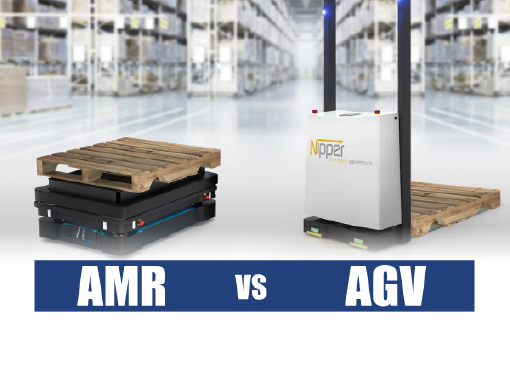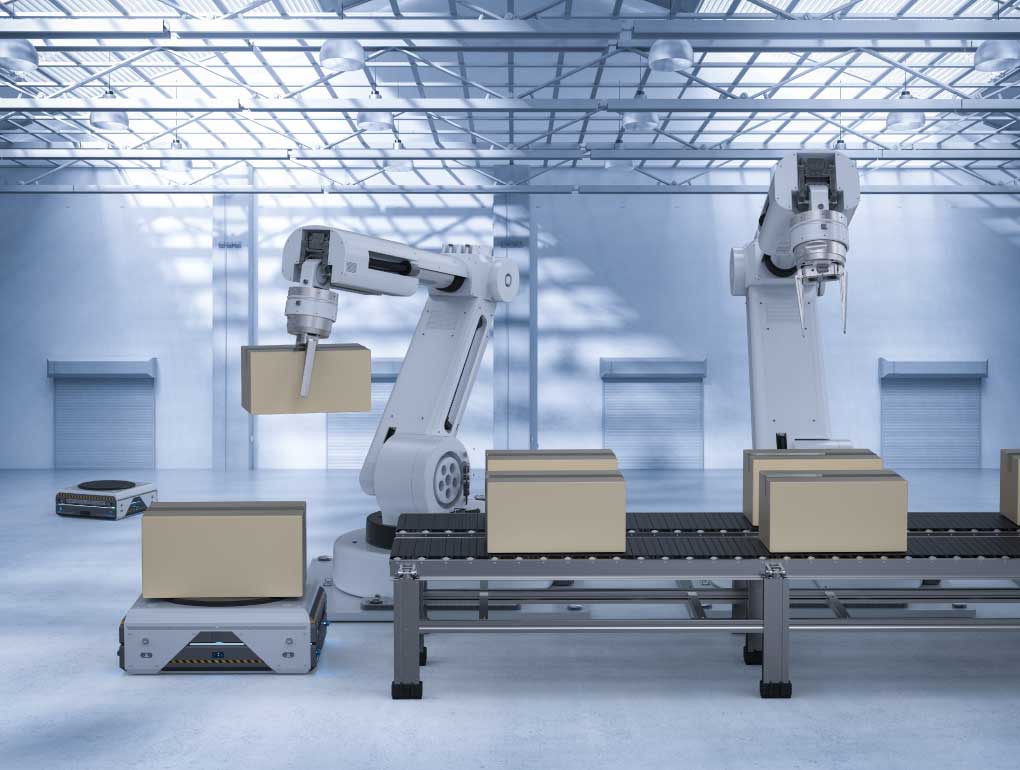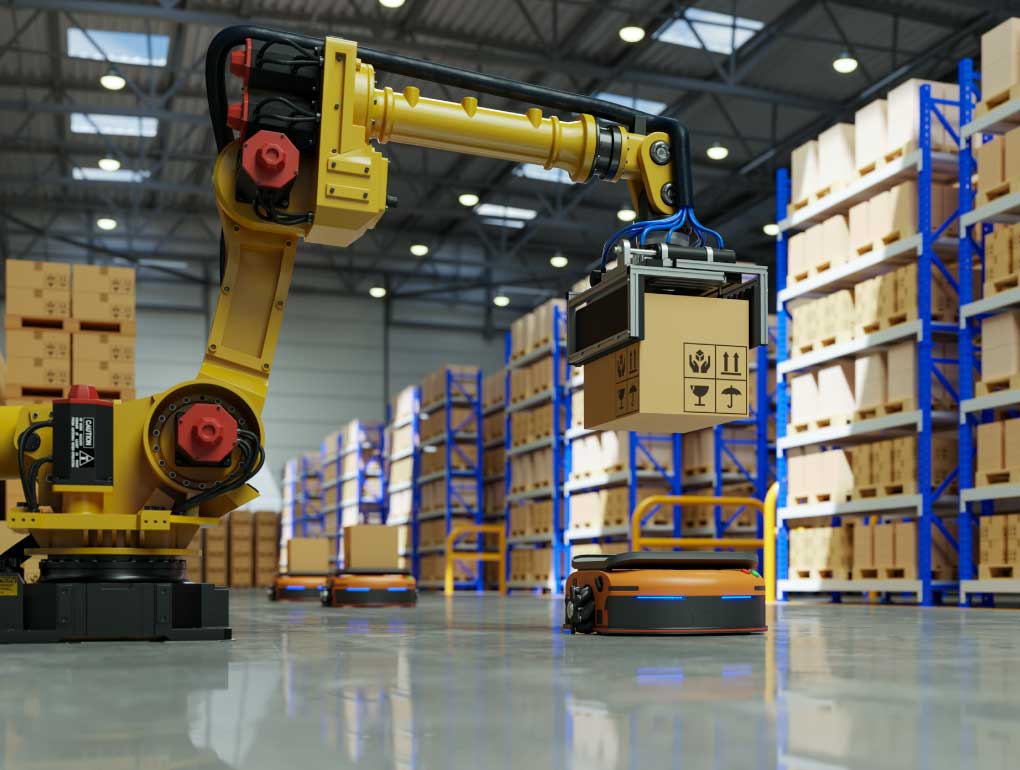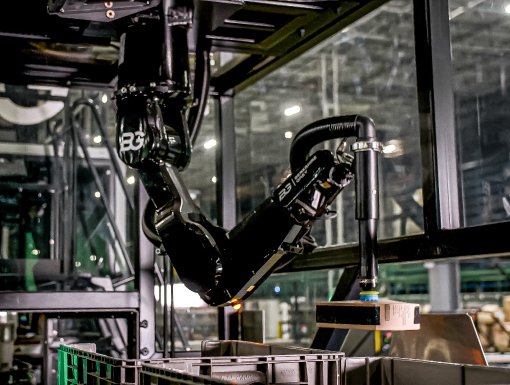If you’re looking for a new way to improve your material handling process, you may have come across the terms AMR and AGV. But what are they, and how are they different?
Autonomous Mobile Robots (AMRs) and Automated Guided Vehicles (AGVs) are both types of robotic solutions that are used in material handling in warehouses, distribution facilities, and manufacturing facilities. These automation technologies move materials from one location to another and make material flow more efficient. They also help to improve error rates and worker productivity.
The 9 key differences between AMR vs AGV are:
- Navigation
- Obstacle avoidance
- Safety
- Cost of ownership
- Deployment
- Applications
- Flexibility
- Responsiveness
- Maintenance
What is an AMR?
A collaborative Autonomous Mobile Robot (AMR) is a robot using sensors that can be controlled autonomously without needing a manual guide or marker. In the environment, it can learn and map the surroundings, know where it is located and dynamically plan its own routes.
What is an AGV?
An Automated Guided Vehicle (AGV) is a vehicle which has been preprogrammed for transportation in storage facilities or manufacturing facilities and are designed to carry out certain tasks.
Traditional AGVs are typically what people think about when referring to AGV, but there are newer models of AGVs that utilize the same sensor technology as AMRs.
Navigation
| AMR | AGV |
|---|---|
| AMRs move freely by using existing infrastructure to guide navigation. | AGVs operate on a fixed path. |
Navigation capabilities is one of the main differences between an Autonomous Mobile Robot and Automated Guided Vehicle.
Autonomous Mobile Robots are equipped with advanced sensors and mapping capabilities that allow them to process their surroundings and navigate freely. This means that AMRs can avoid obstacles and changes in their environment without the need for physical guidance lines or magnets.
In contrast, Automated Guided Vehicles must follow a fixed path. Older AGVs follow underground wiring or induction paint lines whereas newer AGVs utilize sensors similar to AMRs. The sensors alert the AGV to an obstacle, but the AGV cannot reroute itself.
To help you visualize the difference between an AMR and an AGV is to think about a car versus a train where the AMR is the car, and the AGV is the train. The car can move freely to get to its destination whereas the train is confined to the tracks that are already in place.
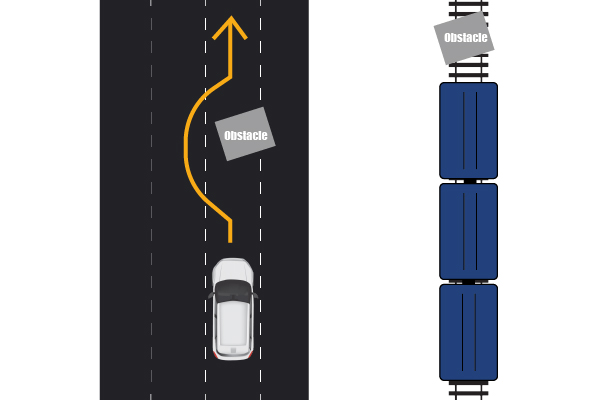
The car/train analogy is also useful when talking about obstacle detection versus avoidance – if something is blocking the train tracks, the train must wait for the blockage to be cleared whereas the car can turn around and find a different route.
Obstacle Avoidance
| AMR | AGV |
|---|---|
| AMRs detect and maneuver around obstacles on their own. | AGVs detect obstacles and stop until the obstacle is removed. |
The main difference between AMR vs AGV is AMRs can maneuver around obstacles on their own. AGVs must stop until you remove the obstacle. AMRs are like cars and AGVs are like trains – cars can drive around an obstacle, but trains have to stay on the tracks until you remove the obstacle.
An Autonomous Mobile Robot can detect, avoid, and move around obstacles. This is possible because AMRs are equipped with sensors that constantly scan the area around them and create a map of their environment. This means that if an obstacle is detected, the AMR can create a new route to move around it.
An Automated Guided Vehicle can detect an obstacle, however it is unable to alter its path or determine new routes. If an obstacle is in the way of the AGV, the AGV will stop and wait for the obstacle to be cleared.
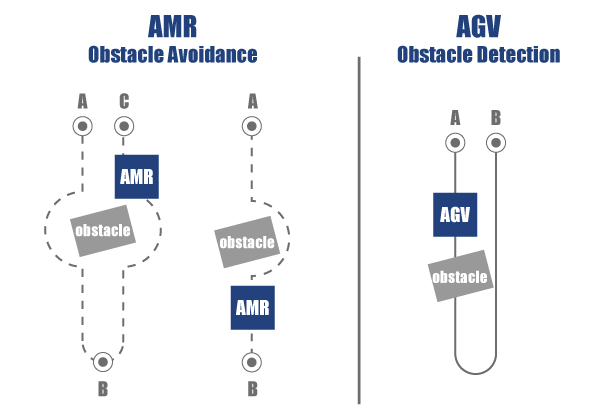
Safety
| AMR | AGV |
|---|---|
| AMRs can travel in the same area as people and are very safe. | AGVs are typically limited to travel within specified areas to ensure safety. |
Both AMRs and AGVs are equipped with safety features such as emergency stop buttons, sensors, and cameras. However, because AMRs are able to navigate around people and obstacles, they are considered to be much safer than AGVs.
AGVs typically operate in areas that are separate from people to ensure safety. This means that AGVs often have to travel long distances to reach their destination, which can lead to increased wear and tear on the AGV.
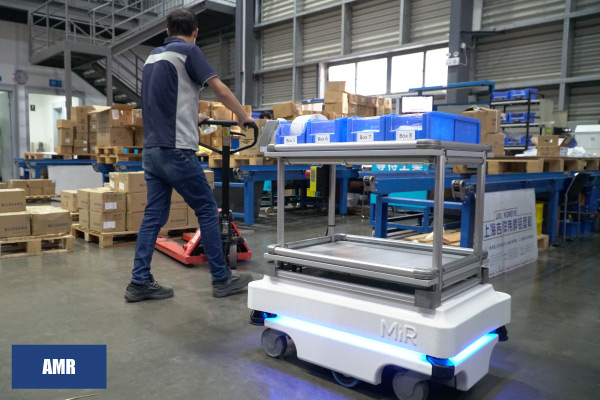
Cost of Ownership
| AMR | AGV |
|---|---|
| AMRs have lower cost of ownership than traditional AGVs because they are easier to deploy and maintain. | Traditional AGVs have higher cost of ownership because they require a dedicated infrastructure and are more difficult to maintain. Newer AGVs that don’t require changes to infrastructure have a similar cost of ownership to AMRs. |
The cost of ownership of an AMR is typically lower than a traditional AGV because they are easier to deploy and maintain. Although an AMR consists of much more advanced technology than a traditional AGV, it is typically a less-expensive solution to deploy.
AMRs can be quickly deployed into existing facilities without the need for any modifications. In contrast, traditional AGVs often require a dedicated infrastructure such as magnetic strips, tape, or wires to guide navigation. This can be a costly investment for companies and may take longer to see an ROI on the warehouse robots.
Traditional AGVs are also more difficult to maintain than AMRs because they require a dedicated infrastructure. This means that if there are any changes or repairs that need to be made, it can be very expensive and time-consuming.
Deployment
| AMR | AGV |
|---|---|
| AMRs can be quickly deployed into existing facilities without the need for any modifications. | Traditional AGVs often require a dedicated infrastructure such as magnetic strips, tape, or wires to guide navigation. |
The speed of deployment for an AMR will depend on a variety of factors, including the size and complexity of the deployment site. However, in general, the deployment of an AMR can be completed relatively quickly and with minimal disruption.
One of the key benefits of Autonomous Mobile Robots is that they do not require any special infrastructure or wiring, meaning that they can be deployed in a wide range of environments. Additionally, since AMRs can safely avoid obstacles, it can begin working immediately without the need for extensive programming or training.
The biggest challenges with traditional AGV deployment are usually related to integrating the AGV into the existing infrastructure and workflows. For example, AGVs might need special wiring or magnetic tape to guide its navigation. Additionally, the AGV might need to be programmed to follow specific routes and instructions.
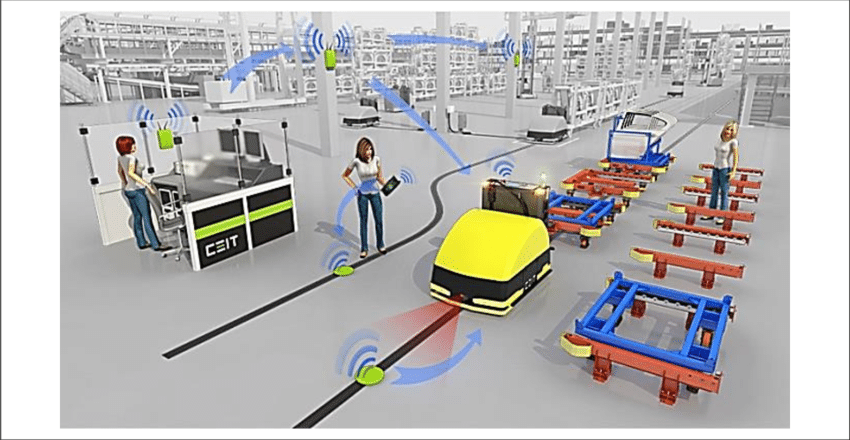
The best way to ensure a successful AGV deployment is to work with an experienced integrator who has a track record of successful deployments.
Applications
| AMR | AGV |
|---|---|
| AMRs are more versatile and can be used in a wide range of applications. | AGVs are typically used in industrial applications such as manufacturing and warehousing. |
Both AMRs and AGVs can be used in a variety of material flow applications. However the difference between them is that AMRs are more versatile because they can navigate around people and obstacles. This means that AMRs can be used in a wider range of applications such as healthcare, retail, logistics, and more.
Autonomous Mobile Robots can be used in more complex environments than Automated Guided Vehicles since they can be programmed to do a variety of tasks. For example, an AMR can be programmed to assist a human order picker in a “follow-me” application. They can also be equipped with robotic arms that allow them to perform complex tasks involving picking up and setting down individual items.
AGVs are typically used in industrial applications where they do not need to interact with people. For example, AGVs are commonly used in manufacturing and warehousing.
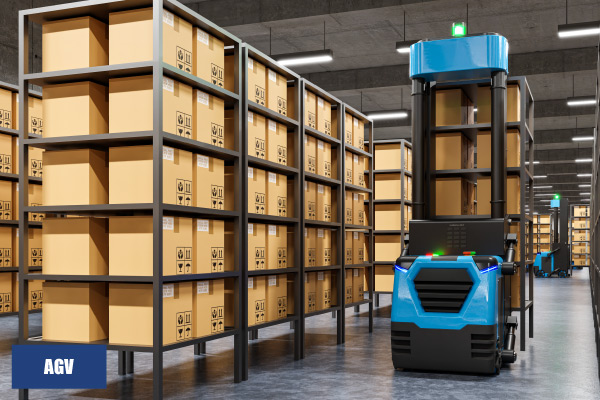
Flexibility
| AMR | AGV |
|---|---|
| Highly flexible. Can be redeployed to new environments or tasks without modifications. | AGVs must be rewired or reprogrammed to be redeployed in a new environment. |
AGVs are designed to follow a specific route while AMRs can be programmed to move around obstacles and change routes as needed. Therefore, if the facility layout needs to be changed or expanded upon, it is much easier to simply reprogram the AMRs than re-implementing the navigation layout for AGVs.
Additionally, AGVs are often limited to one task, such as moving materials from point A to point B, while AMRs can be equipped with various attachments to accommodate different tasks.
Finally, because they rely on sensors and GPS systems for navigation, AGVs can be disrupted by changes in their environment, such as new equipment being added to the warehouse. In contrast, AMRs use autonomous technology that allows them to continue operating even if their surroundings change. For these reasons, AMRs are generally more flexible than AGVs.
Responsiveness
| AMR | AGV |
|---|---|
| Can quickly adapt to changes in the environment and respond to new tasks. | Can be disrupted by changes in their environment and require reprogramming. |
An Autonomous Mobile Robot will automatically sense and avoid objects in its way and map the best alternate route in real time. An Automated Guided Vehicle will detect an object in its way and wait for until the obstacle is removed. Depending on whether a human worker is available to remove the obstacle or not, the AGV could be waiting a while. This decreases efficiency and affects areas downstream.
Scenarios where the environment looks exactly the same throughout can be tricky for AMRs when an obstacle is in its path. For example, the AMR is traveling down a long, empty hallway, and a person is walking towards it. The AMR may have difficulty identifying where it is located along the hallway (whether it is 50 feet down the hallway or 200 feet down the hallway) since there are no identifying characteristics in the hallway. In this scenario, a systems integrator may program the AMR to behave as an AGV and follow a straight path.
Maintenance
| AMR | AGV |
|---|---|
| Minimal maintenance required. | Traditional AGVs require regular maintenance and repairs, which can be expensive and time-consuming. Newer AGVs require similar maintenance to AMRs. |
Traditional AGVs require some amount of ongoing maintenance checks to ensure that the magnetic tape are still in tact. If people or forklifts are constantly moving over them, they may become damaged which would cause the AGV to stop moving.
AMRs do not require infrastructure maintenance like AGVs do. There’s not much to maintain besides the normal maintenance tasks required by both AGVs and AMRs. This includes removing dirt, dust, and other debris that can accumulate on the robot’s sensors and other components.
In addition, the robots batteries will need to be charged regularly, and software updates may be required from time to time.
While mobile robots do require some level of maintenance, they can still provide significant advantages over traditional methods of performing tasks.
Final Thoughts
AMRs can provide free-movement and real-time route planning, enabling them to collaborate on materials handling activities with humans. They also have the ability to rapidly change tasks, re-route themselves around obstacles, and work in almost any environment. These features allow them to be used for a much wider range of tasks than AGVs.
While AGVs have been around for longer, AMRs are quickly becoming the preferred choice for many applications due to their flexibility, responsiveness, and low maintenance needs. If you’re considering implementing a mobile robot solution in your facility, be sure to weigh the pros and cons of both AGVs and AMRs to find the best fit for your specific needs.
Should I Implement AMRs or AGVs?
When deciding between AMRs and AGVs to improve your operations, it is important to consider the specific needs of your application. If you need a mobile solution that is flexible and can easily adapt to changes in your facility, then an AMR is likely the better choice. If you are looking for a more traditional solution that can be used in a simple environment, then an AGV may be a better fit
Still have questions? Our team of experts can help you decide which technology is right for your warehouse. Contact us today to learn more.
If you want to learn more about material handling automation, contact our team of experts today! We would be happy to help you decide which technology is right for your business needs.

